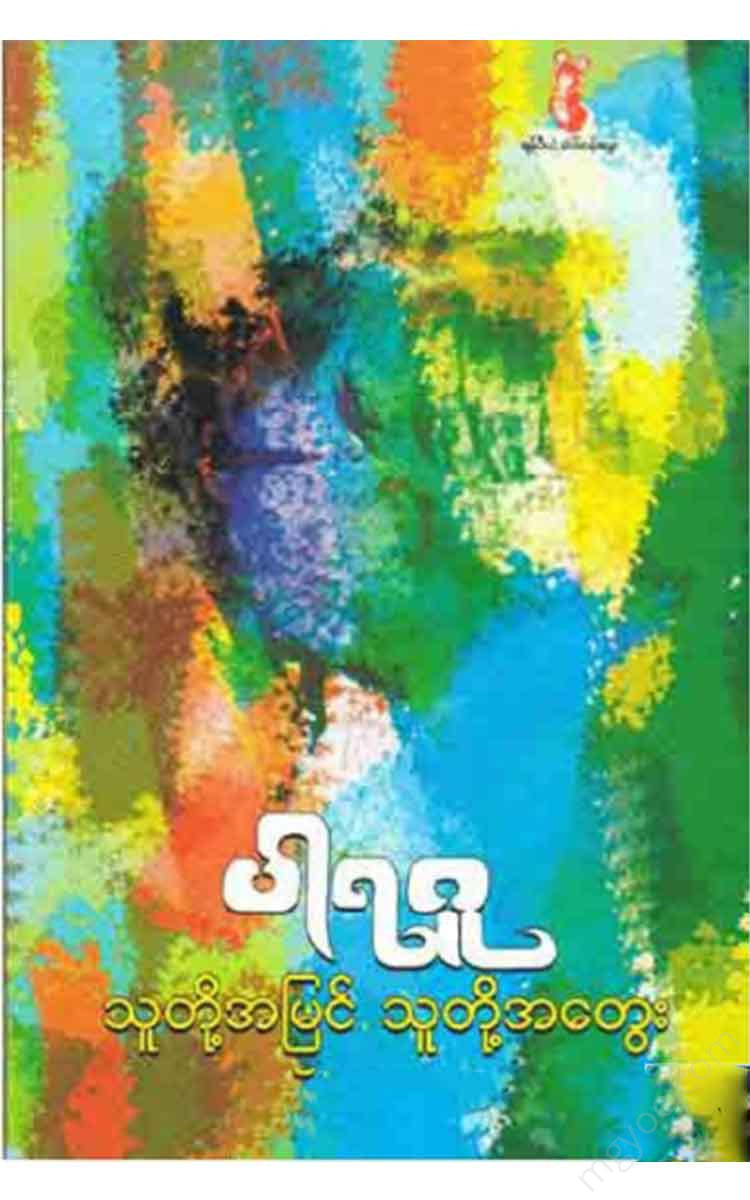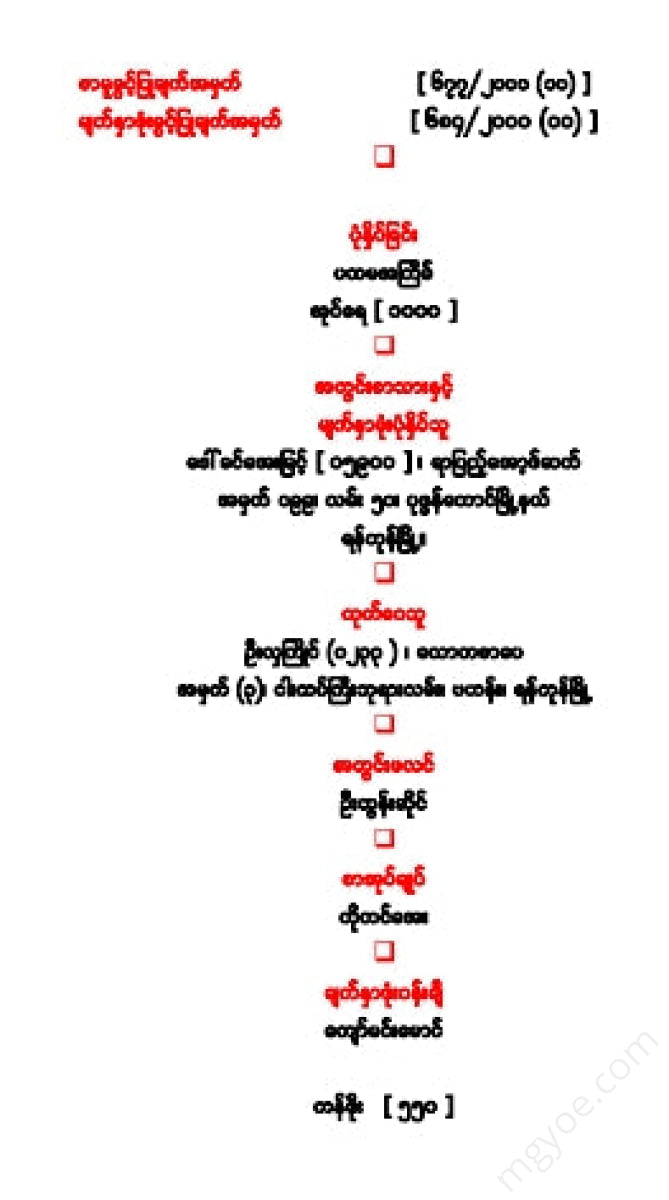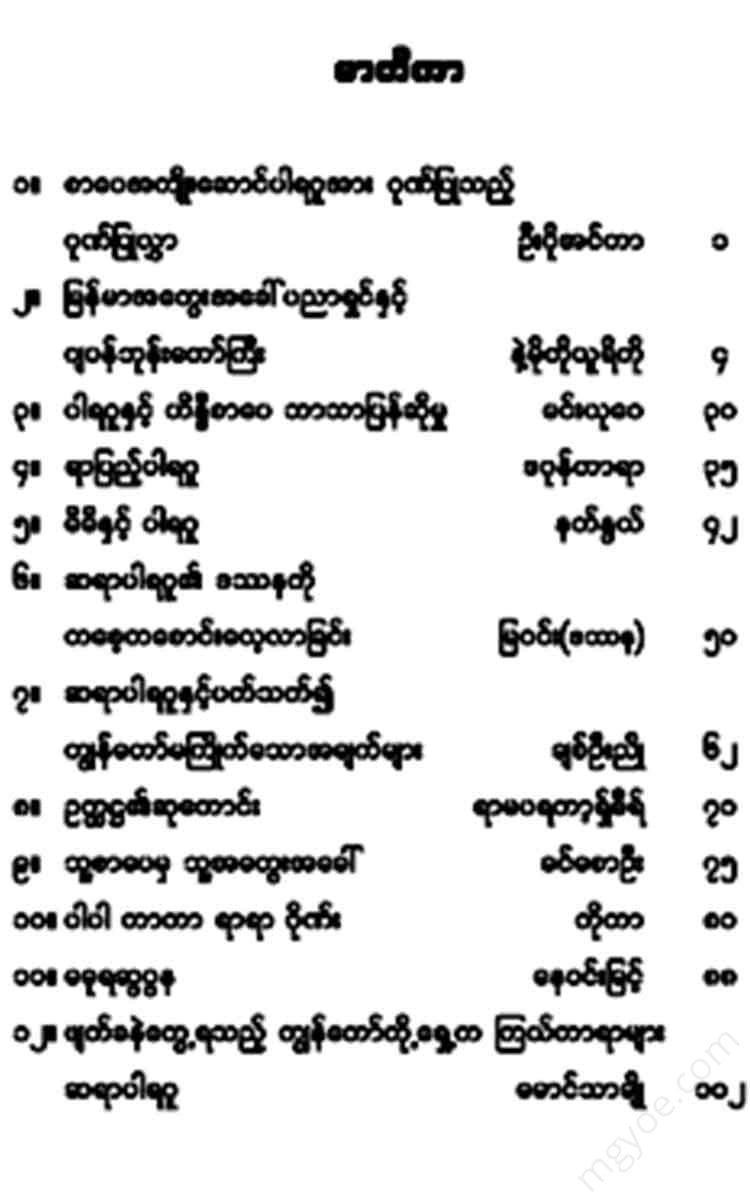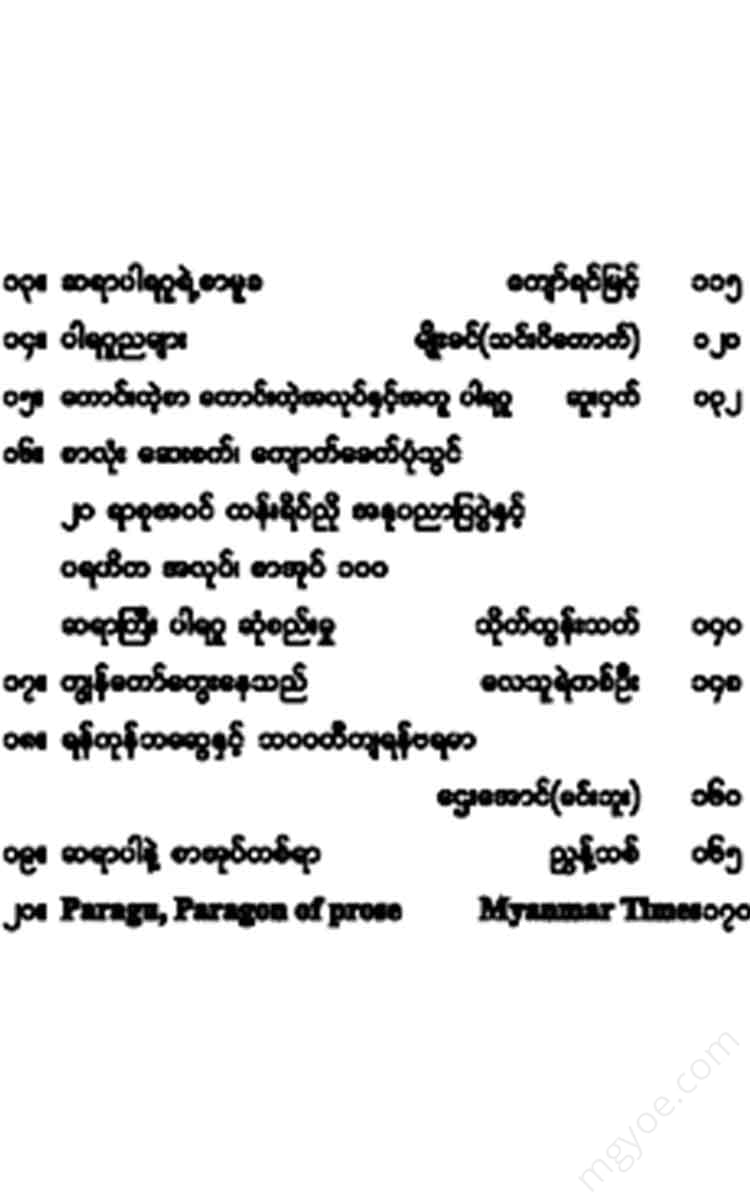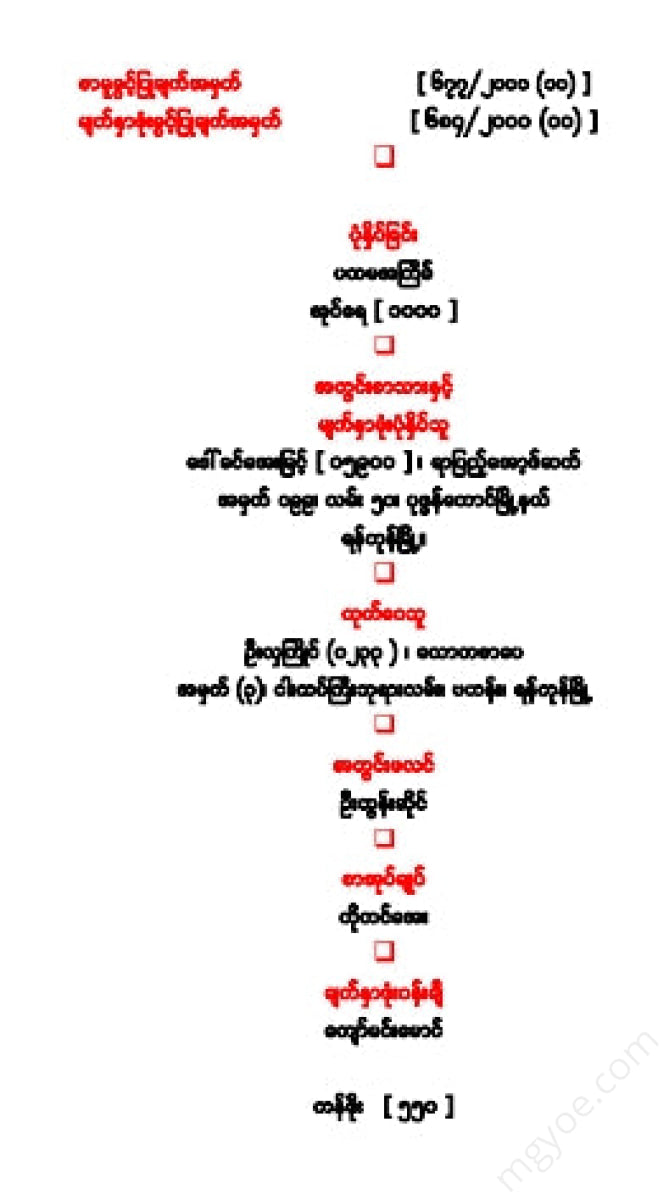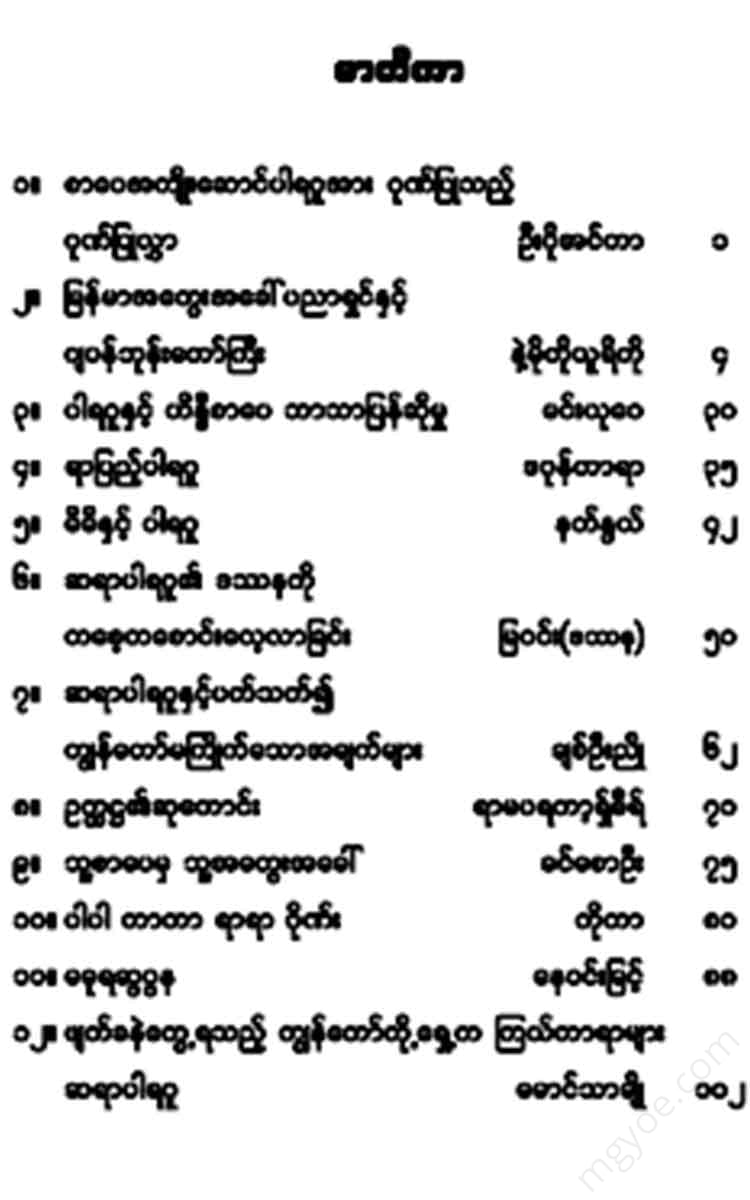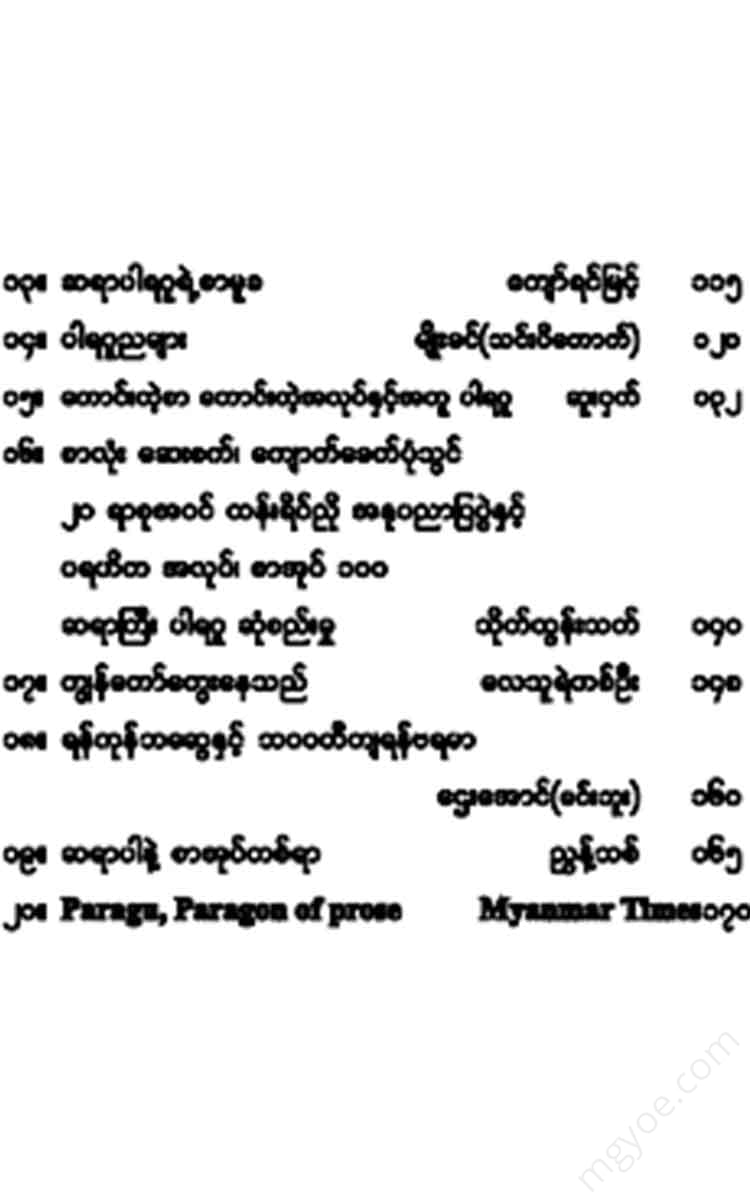Other Websites
Experts - their views, their thoughts
Experts - their views, their thoughts
Couldn't load pickup availability
Burmese philosopher and Japanese monk
Born in 1925 and formerly a monk, Saya Wagu Tay, now in his 30s, is living in Bahan Township, north of Yangon's Kan Taw Kyi, dressed as a man.
From the famous main road, Kabar Aye Bura Road, you enter the narrow and beautiful Keenbe Road (Phaishat Gyi Pagoda Road) to the north of the Kandawgyi, and you will feel the scent of Yangon. The road suddenly turns into coconut trees, mango trees, and sein pan. The trees grow more and more, and behind the trees planted like fences, there are rows of houses.
A young woman was walking slowly, holding her baby in one hand and holding a bundle of firewood over her head with the other. A young man in a full-length suit was galloping down the street on an old scooter. Although the view was bleak, the car door opened and as I got out, I heard voices and modern music on the radio, which made me realize that it was more lively than I had expected.
The house where the monk lived was a small, old, one-story, blue-washed house on the left side of Kinbe Street (Phaishatgyi Pagoda Street). Around the house was a two-story house that seemed to be a family living together. The monk’s house was located in the left corner of the large yard. Like other Burmese houses, there was a long, narrow space in front of the window and door, with the windows and doors hanging down. The front of the space was blocked by a thin iron fence, but the fresh air from outside was constantly blowing in, and mosquitoes and flies were also able to enter freely. The Burmese often received visitors there. I have visited the monk’s house four times in four years, and all four times he would show me to sit on an old wooden chair to the left of the space.
When I looked outside through the iron railings, I saw clothes from the shack hanging on a line strung between two coconut trees in front of the house. I thought the older children were going to school. The children, who were about 4-5 years old, were running around under the clothes line, playing. I glanced at them and then began the interview with the teacher and the teacher.
I can't tell if the teacher had made a reservation or not. I sat down and soon a housewife in her 30s came in from the next door with a cup of coffee. The teacher could read and speak English fluently and understood all the questions I asked. However, for some reason, I don't know. She answered everything I asked in Burmese. So I had to bring my Burmese friend who had studied in Japan for 5 years as an interpreter.
The tall, slender, dark-skinned, and wearing thick glasses, the monk was only around 70 years old. He was a famous writer who had written more than 80 books and was also a renowned scholar of Buddhist philosophy. Although he had become a monk, he avoided the hustle and bustle of marriage and enjoyed reading books. He lived a simple life, but he never showed any signs of dissatisfaction, and he spoke to me calmly with a smile. The words that came out from between those smiling lips made me realize that the words of the monk were very beautiful.
Saya Paragu was born in Hinthada District, located in the northwest of the Rawatty Delta. His parents were in the tailoring business, and Paragu was the youngest of two children, with two brothers and a sister.
After passing the fourth grade at the village primary school, at the age of 10, he studied Pali as a schoolboy for two years and then moved to the monastery in Tinsat for one year. Then he moved to the monastery in Laharat village near Thanlyin, a small town on the banks of the Pazundaung River that flows east of Yangon. It was at this school that the monk entered the monkhood and worked hard to master the required Pali subjects. Thanks to his diligence, he passed the first junior grade at the age of 15, the first intermediate grade at the age of 16, and the first senior grade at the age of 17. Pali is an essential subject for reading and teaching ancient Buddhist scriptures in Myanmar.
In December 1940, the Pacific War began. From December 23 to 25, the Japanese 3rd Air Force bombed Yangon three times. The monk, who was in Thanlyin, a short distance from Yangon, was shocked when he saw the Japanese planes clearly. However, the 17-year-old Korin Waragu was focused on his Buddhist studies.
"Well, it's better not to think about the war. There are so many things to learn and remember," he told himself, and immersed himself in his books. Until the Japanese language school opened in Thanlyin in June 1940, the expert had never come into contact with any Japanese soldiers or Japanese people.
However, ever since the Japanese language school opened, the scholar, who was passionate about literature, has been diligently studying Japanese for about two hours a day with other villagers.
The two Japanese teachers who taught Paraguto Grautasot were Mr. Tato and Mr. Taneimine. These two teachers remained close to Paraguto until he left Thanlyin in May 1945.
"Although the military situation changed so rapidly, the kind-hearted attitude of these two teachers did not change at all. It was because of these teachers that a deep love for Japan began to grow in me."
The expert later recounted this.
Soon after the Japanese school opened, a Japanese soldier from the Nichiren sect of Japanese Buddhism was among the Japanese soldiers stationed in Thanlyin. The soldier would come to the monastery where the teacher lived whenever he had time, play drums, and worship the Buddha. The teacher and the Japanese soldier would discuss Buddhism whenever they had time, and the teacher began to learn about the Nichiren sect of Japanese Buddhism from the teacher and became interested in it.
At that time, Colonel Suzuki, the chairman of the Minamitikan (Southern Operation Group), arrived in Thanlyin. Suzuki was accompanied by the Japanese monk Nawai San and the anti-colonial Burmese nationalist poet Thakin Htet Hmoing. Nawai San had been in Yangon before the war began and was a monk. He used to go to pagodas and pagodas such as Shwedagon Pagoda with a drum and chant Dhamma songs, so the Burmese people knew him as the Japanese monk. A lecture was held at the Thanlyin cinema, and Suzu San (Bo Moe Dung) and Nawai San gave speeches. Suzuki spoke in English, while Thakin Thein Maung spoke in Burmese. Thakin Htet Hmoing also spoke. A person who is deeply immersed in Theravada Buddhism listens attentively to the teachings of the Japanese Nichiren sect, Nawai, with great interest.
However, Suzuki and his team's goal was different from what the experts had expected. The Japanese army was able to conquer the land from north to south, but it was very difficult to win the hearts and minds of the local people. It was especially important for the Burmese people to become loyal to the Japanese. Therefore, the Burmese people, who deeply believed in Buddhism, intended to use the Buddhist temple to support and help the Japanese army.
Suzuki first established a religious association in Yangon and later planned to establish branches throughout Burma. Suzuki said the following:
My dear friends, all Burmese people are very deeply believers in Buddhism. We, the Pan people, also strongly believe in the Buddha Sastra. The Buddha will protect those who believe in him. No matter how different the sects are, there is no difference between the Burmese and the Japanese people in their belief in the Buddha.
"Let us, Buddhists, unite. Then let us drive out the British who have oppressed the Burmese for so many years. If we can drive the British out of this country, the independence that we have been waiting for will surely come true. The Japanese army is coming from Japan to Burma to fight for our independence. Soon, true peace will come to this Burma."
The powerful words of Naga San also moved the hearts of the Burmese monks. The monk was not aloof from the young monks. He was as moved as the others.
Suzuki's idea was to preach this doctrine to the monks residing in the monasteries in the various regions that had first fallen under Japanese occupation. Through the monks' sermons, the doctrine could be preached to the public, and thus spread throughout the country in a short time, garnering a large amount of support from the Japanese military.
In reality, Suzuki's plan did not go as planned. The Burma Independence Army (BIA), which emerged with the Minamitikan, fought bravely because of Suzuki's promise to "fight with Japan. We must achieve Burmese independence soon." However, as the Japanese were the first line of defense, the BIA was not seen clearly.
